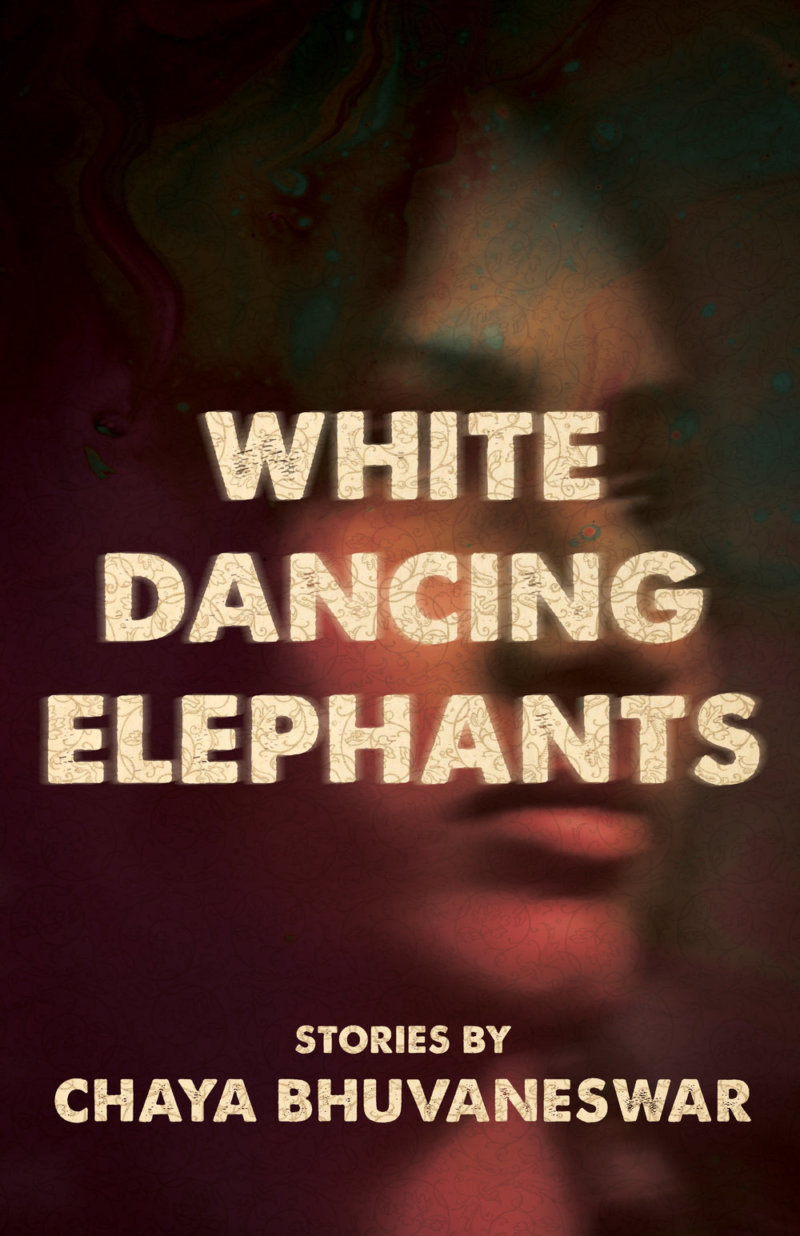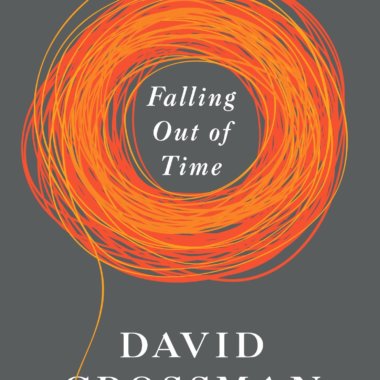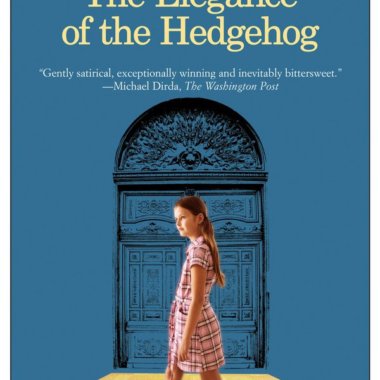White Dancing Elephants was a finalist for the 2019 PEN America Literary Awards.
Women take center stage in Chaya Bhuvaneswar’s debut short story collection, White Dancing Elephants. As characters, these women find themselves in unyielding, sometimes violent circumstances, as prejudicial cultural norms pervade their lives and cause indisputable suffering. Their self-regard is compromised. It is not as potent as it could or should be. Are they at fault? Are they to blame?
The story “White Dancing Elephants” introduces the collection as if it is a prologue to the sixteen stories that follow, preparing the reader for the deep-rooted emotive force that underlies Bhuvaneswar’s writing. In tone and mood and voice, Bhuvaneswar envelops the stories in evolving themes of oppression—cultural, racial, sexual—as the characters struggle with their individuation.
The narrator in “White Dancing Elephants” has just experienced a miscarriage and is caught in a tropical downpour, as she walks from the London hotel room on her way to buy a pad at a subterranean mall. On the first day when the blood appears, she is cautious about “collecting proof” that the baby is still living. She believes she saw him in a pad, his “flesh hard, less darkly bloody than the rest of it, more than just a part” of her. She rationalizes his death: He could still be alive hidden inside her uterus, or the hardness could be a piece of a fibroid.
She returns to the hotel to rest, but anxious and needing to find green space, she puts on her high-heeled boots as she did when she used to go dancing. She takes a taxi to Primrose Hill and walks deep into the park, where the metaphor of a forest introduced in the first paragraph of the story becomes all-important. Not only does the forest become the imaginary place where her child would nestle against her breast and say “Mama,” the forest is also where “no one can stop them from dreaming,” and where the metaphor of elephants is first introduced: “the rustling of leaves could be elephants unfolding and folding back their ears.”
She cuts across the park and takes a left turn to the London Zoo—too early to be open—then takes a taxi to Oxford, where she studied fifteen years before, and she remembers sitting alone in “some ancient common room” where she recited words multitudes would understand. Now, she conflates this past memory with “imagining white elephants and dreaming” of the boy’s birth. She crosses the Isis River, perceiving that the dead fetus is more perceptive than she—he hears “the thud of elephants, the dancing procession, the march not of a wedding but a funeral.” He already knows the end is near, “silent as the blood leaked” from her body.
On the grassy bank, she lies down and dreams of her child, “of elephants thumping a distant melody, disrupting the forest.” She feels the weight of the elephant on her—a white dancing elephant—“airy and Disney in one dream, bellowing despair and showing tusks in the other. In the last dream, a gash of red stains the white hide” and she is “forced to watch an elephant dying.”
She identifies with the elephant’s death, which makes her “want to sink into the earth, ashamed and finally mindful” of her own blood and the death of the fetus. She closes her eyes and dreams of “six white tusks entering” her flesh. She blames herself: She is “too late, too careless, too empty.” Contemplating suicide, she writes her obituary, how and why she ends her life.
What is the meaning of the woman’s dream of a white dancing elephant? As a metaphor, the meaning becomes clear, not least because elephants in India and other Southeast Asian countries are revered, blessed as they are by the gods. In India, white elephants occupy a special place in the hierarchy of Hindu mythology, given that Indra, the powerful god of the sky, is visualized riding atop a white elephant with six trunks and six pairs of tusks. This white elephant—Airavata of celestial origin—is associated with rain and fertility.
In the first paragraph of “White Dancing Elephants,” the woman claims she “hates metaphors of rain, fecundity, of gushing water from a hidden space” even as she is later preoccupied with white dancing elephants. In her dreams the white dancing elephant, at first, embodies the auspicious essence of Airavata, but ultimately it becomes a vehicle of death. The paradox between the mythic Airavata and the woman’s dreams can be seen as central to the story’s deeper meaning. The white elephant is life and fertility; for the woman it is ironically miscarriage and death.
And yet . . . there is love in this story that literally travels through an umbilical cord to the deepest place of this woman’s reason for being. This child is her love: “my darling,” “my sweet love,” “my darling love.” In her last dream, six white tusks enter her flesh, but notably, don’t impale her. Ambivalent as this dream is, it could be construed that the son is reborn through her—after her death he would live. In the end the woman does not commit suicide; she puts on her high-heeled boots and leaves the grassy bank, believing that one day her son will be alive, and he will visit the same river, maybe walk across the Isis bridge. This he will do—her own sweet love.
Why does the woman accuse her body of failing or of losing time being afraid? Why does she suffer anguish about her body and face, being called a “cheap tart”? Will she overcome the negative judgments about herself? The women characters in White Dancing Elephants ask themselves these questions, and the inquiries become themes of rage, confusion, betrayal, displacement, and/or fear that connect the stories with “White Dancing Elephants.” The themes are implicated in the characters’ perception of their worth and place in the world.
Nothing is easy in “White Dancing Elephants,” or in any story in the collection. Contrary to what one might think, the stories are not depressing or sensationalized. Bhuvaneswar is more meticulous than to sentimentalize stories about women whose lives she takes seriously. Like a sociologist, she wrestles with the reality and meaning of women’s lives. The protagonists are real women, in their fault and in their promise. They confront the paradoxes of life, examine everything. Answers do not come easily.
Take Dr. Sylvia Uwagaba, a forty-year-old bi-racial professor and psychoanalyst in the story “A Shaker Chair,” and Maya, a twenty-year old attractive, Korean-American, one of her patients. The countertransference that a counselor knows can be a dangerous emotion gets out of control, and Sylvia can’t shut down her erotic attraction to her younger client. During the course of the story, repressed memories of her father’s incest come back to haunt her—in a most devious form.
Or, Narika Kandelwala in “Talinda.” An assistant professor of South Asian studies, Narika betrays her childhood friend Talinda Kim Tae-Hyun, thirty-seven, a “board-certified internist and geriatrician,” dying of stage-four gastric carcinoma, given six months to live. Narika falls into an affair with Talinda’s husband George and tries to understand why she is deceiving her best friend: “What binds George to me is our years of baby hunger, real and plain.”
Or Jayanti in “Orange Popsicles.” A scholarship student, Jayanti is brutally raped by Dave Sheffield and two accomplices, or maybe it was three. Sheffield, a star biology major, seduces her into cheating on an advanced biology exam by proffering his crib sheet in a class she shouldn’t have taken in the first place. Jayanti is a painter and her paintings have appeared in world galleries, but the rapists dislocate her shoulder and her right arm dangles at her side, her fingers useless: “How would she do those etchings now?” Sheffield warns her to keep her mouth shut. He is headed to a top med school.
“In Allegheny,” Michelle, forty-one, and John, thirty, fall in love. She is a surgeon at the University Medical Center and supervises him as a junior student in the surgery clinic. He is the father of a ten-year-old son living in Berkeley, and an Anglo-Indian child in India, born when he was a student there. Michelle and John live together, but his former life confuses her, particularly after he “is matched” at Stanford for psychiatry, where he would be near his son. Michelle decides that he should move out. While they are apart, she visits a Hindu temple, has an epiphany, and drives from the temple to John’s place. As Michelle slips into bed beside him she realizes “nothing could sustain her loyalty, nothing in medicine or religion, nothing more than the rhythm of their breaths and pounding hearts, the mystery of them.”
It is in “the mystery of them” that Bhuvaneswar knows her characters, exposing them to the adversities of life. Conflicted as they might be, these characters face compromised situations, sometimes through no fault of their own. They could be victims of ethical, moral, and physical violence, as racism and discrimination bend a culture toward physical and psychological harm.
Still, the characters in these stories, even in rough times, rise to the challenge, no matter where blame is assigned. The existential question is this: How does one live his or her life? Love—in whatever degree and form—permeates the boundaries and accesses a rightful place in the struggle to find value despite adversarial environments and self-rejection.
The emotive force of White Dancing Elephants is a testament to Bhuvaneswar’s innate gift to connect the themes of race, color, ethnicity, culture, sexuality, and gender that emerge throughout the collection in the lives of women and men*—characters that we might experience vicariously, and those that might be us. None of the stories convey gratuitous pity or melodrama. Rather, Bhuvaneswar enriches each story in layers of artistic truth and builds their macrocosm to guide and define the characters’ lives—their cosmos emerging from the inside out.
*There are male protagonists in three of the seventeen stories in White Dancing Elephants.
◊
Read Sandra Fluck’s interview with Chaya Bhuvaneswar here. You can also read one of the stories in the collection, Newberry, now at The Write Launch.




4 comments
GOOD READ. THANK YOU FOR THIS. SOMETIMES BOOK CRITIQUES ARE ALL I GET TO KNOW, AKA HAVE TIME FOR.
Well, maybe in late fall you’ll have more time to read. And the winter looks promising for fine reading…..
A book review definitely helps to gain insight into a book, which it seems this review has done for you. If you have the opportunity in the future, I highly recommend Chaya Bhuvaneswar’s debut collection White Dancing Elephant. These are stories of exquisite artistic truth.
What interesting characters Bhuvaneswar has dreamed up. It’s like she has sat on a park bench for many years in many different parks and observed the people walking, running, shuffling by and chosen the most interesting ones to develop into characters for her stories. What also is interesting, is how you have reviewed the first story in the collection in such a way, it’s as if I have already read “White Dancing Elephants.” I find this ability of yours, Sandy, admirable. You do the author a great service with how you dive into the language, the story and the character’s inner and outer lives. I have put this collection of short stories on my reading list. Thank you for the recommendation.